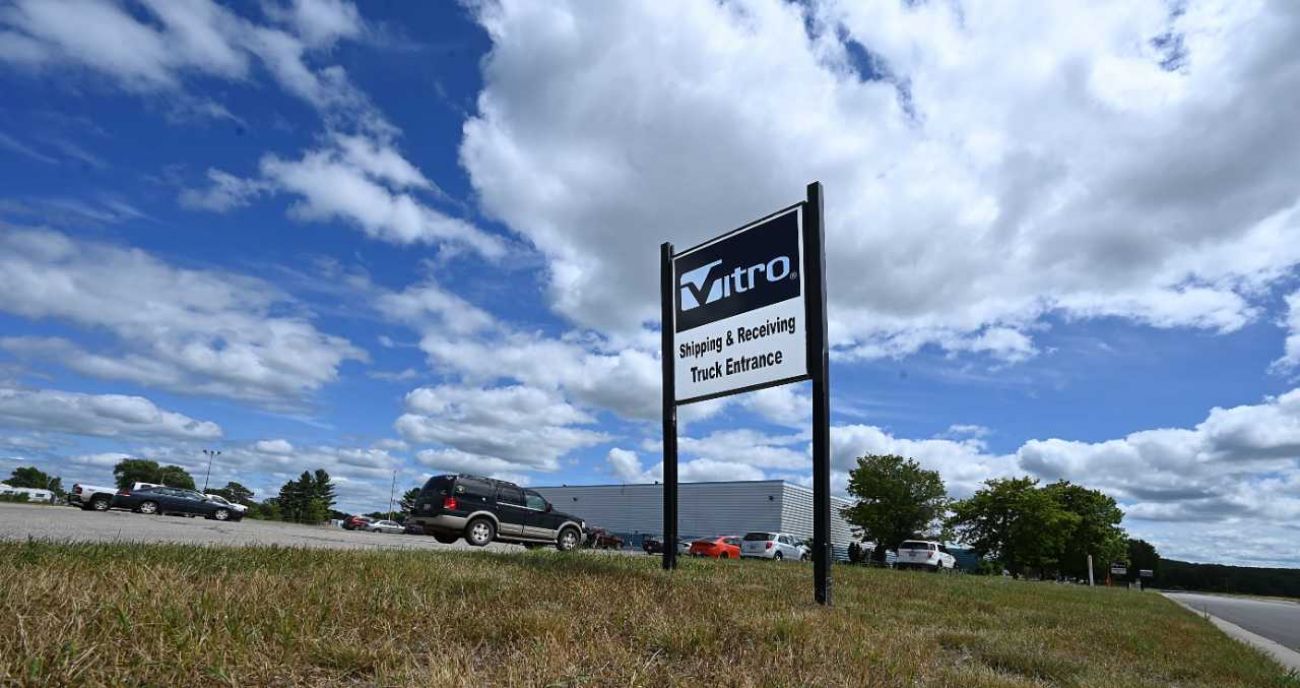Michigan’s permanent layoffs suggest thousands of jobs may be gone for good

Massive job losses during the coronavirus pandemic started out as temporary, but now economists are watching a growing concern: Reports are starting to show increasing numbers of layoffs that are permanent, a trend that could slow recovery.
Waves of temporary job cuts started in March, while state unemployment skyrocketed over months. By June, the unemployment rate hit 14.8 percent, but in July that fell to 8.7 percent, according to the state, following more businesses opening as cases of COVID-19 eased.
Now hints are emerging that many lost jobs won’t be coming back, economists told Bridge Michigan.
- Related: Michigan town wonders what’s next as factory closes and 125 jobs are lost
- Feds OK extra $300 a week for Michigan jobless – but it may not last long
- Michigan coronavirus unemployment, map, curve, COVID-19 updates
- Dashboard: Michigan coronavirus testing numbers, trends, COVID-19 data
“When the dust settles, and firms reopen … a lot of people are going to be going back to their automotive manufacturing job, or their construction job or their restaurant job,” said Michael Horrigan, economist at the Upjohn Institute in Kalamazoo. “But many people won’t.
“It’s becoming pretty clear that permanent job loss is beginning to increase.”
Michigan has recovered about half of the jobs lost to the pandemic, or about 540,000 positions. The state saw 266,000 jobs return in June; job gains fell to 103,000 in July.
Across the United States, permanent job losses doubled from 1.4 million to 2.8 million over the last four months, said Michael Hicks, director of Ball State University’s Center for Business and Economic Research. The job loss tops all previous recessions except the Great Recession just over a decade ago, “which was a huge job-killer,” he said.
“The presence of permanent job loss extends the recovery period by years, not by weeks or months,” Hicks said.
Horrigan said many economists are starting to look at these numbers amid concerns that reopenings — including schools and college campuses — are resulting in setbacks and not the gradual and sustained return to a normal economy that they say could have happened during a so-called “V-shaped recovery” if earlier shutdowns and stay-at-home orders had better curtailed the virus’ spread.
A recent national survey of CEOs also suggests more permanent layoffs are coming. A third-quarter survey showed 38 percent of corporate leadership polled expect to reduce their workforce, according to the Measure of CEO Confidence from The Conference Board, a nonprofit business research group.
Nationally, about 5 million workers have left the labor force in just the past few months. Were they included in the jobs report, which includes only people actively looking for work, the unemployment rate would be 2.5 percentage points higher than the 10.2 percent rate for July, Hicks said.
Layoff notices provided to Michigan officials under the federal Worker Adjustment and Retraining Notification (WARN) Act from mid-March through July 31 show an estimated 6,000 permanent jobs lost in wide-scale layoffs, compared to about 18,000 temporary layoffs at companies with mass layoffs.
- Michigan seeks $300 per week in extra benefits for unemployed
- Big benefits, claims a ‘perfect storm’ for unemployment fraud in Michigan
But many of those temporary layoffs have since become permanent, or employers warn that they may not yield call-backs.
The jobs are varied, according to Bridge’s look at Michigan’s WARN filings:
Vitro, an automotive glass supplier to the auto industry, is consolidating factories. Its operation in Evart, where it was the second-largest employer, will fully close by Labor Day. The total jobs lost, it told the state, comes to 125.
Martiz of Southfield, an events organizer for automotive clients, said in a statement from the company that this month it would make five “permanent terminations of employees who had previously been placed on what Maritz reasonably believed at the time would be a temporary layoff.”
Greektown Hotel and Casino in Detroit told 621 workers they would lose their jobs in September, saying “significant drags on our business will likely continue for the foreseeable future.”
MAPAL, a precision tool company in Port Huron, in July said it planned permanent layoffs of up to 50 people after it continued “to experience a significant, reduced demand for our products and, equally important, an unknown future demand due to the worldwide COVID-19 pandemic.”
Among the employers starting to shift from temporary to permanent layoffs is HMS Host, a food-service operator in the travel industry. It told the state on Monday that 84 workers at the Gerald R. Ford Airport in Grand Rapids will have their jobs eliminated if they’re not called back by Oct. 15.
Gabe Ehrlich, a University of Michigan economist, said Yelp gives more hints about long-term job losses.
“The fraction of closures that they estimate are permanent has risen over time,” Ehrlich said, with 55 percent of closed businesses listed on the consumer review site saying they will never reopen.
“That’s where you start thinking about the permanent scarring,” Ehrlich said.
Workers affected by permanent job losses are finding challenges that they never expected. Restaurant workers, for example, had been in high demand before the pandemic. Universities are announcing layoffs. So are medical centers.
Will Emerson, 48, of Eaton Rapids holds a doctoral degree and most recently worked as director of student success for the Michigan Association of State Universities. He learned in June that his job had been eliminated as grant funding evaporated.
“I thought I was fairly insulated” from layoffs,” Emerson said. Now, he’s looking at employment listings daily as his paid insurance is set to expire by the end of the month. He said he’s seeing a lot of hiring freezes.
“I have no doubt there will be a lot of folks like me in the job market,” Emerson said. “We’ll be looking while there’s a decrease in jobs and an increasing pool of job-seekers. That will make it challenging.”
That raises questions about recovery, said Ehrlich, the U-M economist.
“It’s very difficult to get a sense of where we’re going to be,” he said. “Once the public health situation returns to normal, it’s clear that the economy is not going to return to normal immediately.”
Horrigan of the Upjohn Institute said the long-term unemployed worry him most in the jobs data. Like Hicks of Ball State, Horrigan said it’s important to watch the number of unemployed people and the number of people who are out of the job market and not counted among the unemployed.
When unemployment runs out, the people who have left the job market then become “reentrants” are most likely to find it difficult to find a job.
“They’re losing their skills and the long-term unemployed become less and less attractive to employers,” Horrigan said. At the peak of the Great Recession, he said, about 45 percent lost jobs for 27 weeks or longer.
“That [percentage] came down, but very slowly,” he said.
The degree of permanent job losses that we see through the end of the year and into 2021 will ripple through states and communities. It also will influence policy, Hicks said, as officials confront unemployment benefits while states and municipalities forego tax payments and revenue sharing.
Unclear so far is which types of jobs will be lost in Michigan, with analysis just beginning. Most likely, Horrigan said, is that many people will have to work on learning new skills to fit available positions.
That hasn’t always been the case. Americans older than 50 grew up with recessions that were “short and deep” with robust recoveries, Hicks said. “You became accustomed to people being laid off for two, three or four months, and then going back to work.”
But recessions in the early 1990s, 2001 and 2007-09 saw sluggish labor market recoveries, he said.
Policies that could speed recovery would focus on start-ups, new business financing and job retraining, Hicks said.
If preliminary data are right, Hicks added, higher income and educated workers will be less affected by permanent job loss.
“The real economic damage will be at the lower level, particularly the young people who are unemployed at much higher rates than other workers. “
Business Watch
Covering the intersection of business and policy, and informing Michigan employers and workers on the long road back from coronavirus.
- About Business Watch
- Subscribe
- Share tips and questions with Bridge Business Editor Paula Gardner
Thanks to our Business Watch sponsors.
Support Bridge's nonprofit civic journalism. Donate today.
See what new members are saying about why they donated to Bridge Michigan:
- “In order for this information to be accurate and unbiased it must be underwritten by its readers, not by special interests.” - Larry S.
- “Not many other media sources report on the topics Bridge does.” - Susan B.
- “Your journalism is outstanding and rare these days.” - Mark S.
If you want to ensure the future of nonpartisan, nonprofit Michigan journalism, please become a member today. You, too, will be asked why you donated and maybe we'll feature your quote next time!




